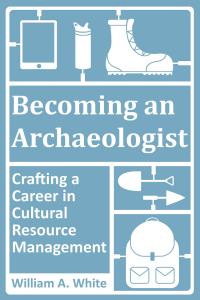Aside from its nickname—The Biggest Little City in the World—I only know two things about Reno, Nevada: It’s the stage for the comical show “Reno 911” and it is the site of the final bowling match in the cult classic comedy “Kingpin”. I’m a huge Bill Murray fan, so Reno is indelibly etched into my memory. And, there’s a good reason for this. Kingpin his hilarious, especially for its final bowling match:
This year, Reno will also host the 35th Great Basin Anthropological Conference. While I’m here I will have to pull a Munson and bowl at the National Bowling Stadium (http://www.gobowlreno.com/about/stadium) before I leave.
In between tearing up the lanes in Reno, I’m going to be attending some archaeology talks and giving one as well. The archaeology/anthropology talks will cut into my bowling time but seeing friends, hearing about awesome discoveries, and learning more about our craft is the real reason why I’m going. Here are some of the talks/symposia I’m most interested in hearing:
 General Session 1: Archaeology in the 21st Century (Thursday afternoon, 1:00—3:15 PM Silver Baron B)
General Session 1: Archaeology in the 21st Century (Thursday afternoon, 1:00—3:15 PM Silver Baron B)
Podcasting as the future of archaeology, going paperless, and addressing professional certifications are all three topics that have been on my mind over the last few years. They’ve all been addressed on this blog as well. Even though these talks are pretty much preaching to the choir (me), I still want to see what my peers have to say. I also want to see what’s planned for the future of online databases like the IMACS.
Roundtable Discussion: When archaeological sites are more than data (Friday morning, 8:00—10:00 AM Silver Baron C)
When are archaeology sites more than just data? All the time. I’m intrigued to see what this colorful cast of professionals have to say about going beyond archaeological data. It will be interesting to see if community-based participatory research is something CRMers envision for the future.
Symposium 8: Performing Place: Expressions of Memory and Materiality in the Great Basin, Colorado Plateau, and Eastern California (Friday morning, 10:45—12:00 Noon Silver Baron 5)
FULL DISCLOSURE: This symposium is full of fellow University of Arizona graduate students and researchers. It is my moral obligation to support the Wildcats. I’m also intrigued because most of these presenters are my co-workers in the Bureau of Applied Research in Anthropology (BARA) at Arizona.
I am truly proud of what we do at BARA and try not to miss an opportunity to learn about the research my co-workers are doing. In my opinion, BARA is at the cutting edge of ethnography and community-based participatory research.
Symposium 11: Historical archaeology in the Great Basin and Beyond 5.0 (Friday afternoon, 1:00—4:00 PM Silver Baron C)
FULL DISCLOSURE: I’m presenting in this session so I have to attend. I also want to see the other presentations, especially the talk on sanitation in Boise and early modern housing in Reno. Trash and early suburban sprawl are some of my personal interests (It’s a wonder I ever got married with interests like these).
General Session 6: Historical Archaeology (Saturday morning, 8:00—9:30 AM Silver Baron B) and General Poster Session 4: Historical Archaeology (Saturday morning, 8:00—11:30 AM Silver Baron A)
The presentations in this general session span a wide range of activities and time periods. It will be interesting. The histarch poster session also covers a range of topics. I am most interested in the Chinese can poster, which is something that sorely needed to be addressed. It looks like someone finally has.
“Big Ern is above the law”: What happens when companies act like they’re above historic preservation laws?
I think the elephant in the room for all cultural resource management archaeologists is the recent demolition of archaeological resources associated with the Dakota Access Pipeline. I don’t have all the information on this topic but reports state construction crews destroyed archaeological resources in an attempt to keep pipeline construction moving. This was done in sight of Standing Rock Sioux and other Native American protestors who have been advocating against the pipeline’s construction.
Violence against protestors and violation of historic preservation laws has prompted President Obama to suspend construction on the pipeline. While this is a victory for protestors and preservation advocates, it is an example of how businesses can act like they’re above the law.
Sometimes, asking for forgiveness is easier than just doing the right thing. In this case, doing the right thing includes listening to the recommendations of your cultural resource management archaeologists and the descendant communities that care about lost heritage. I wonder what my peers at the 35th Great Basin Anthropological Conference have to say about this.
If you’re at the conference, look me up via twitter (@succinctbill). Maybe we can bowl a game together.
Write a comment below or send me an email.
 Having trouble finding work in cultural resource management archaeology? Still blindly mailing out resumes and waiting for a response? Has your archaeology career plateaued and you don’t know what to do about it? Download a copy of the new book “Becoming an Archaeologist: Crafting a Career in Cultural Resource Management” Click here to learn more.
Having trouble finding work in cultural resource management archaeology? Still blindly mailing out resumes and waiting for a response? Has your archaeology career plateaued and you don’t know what to do about it? Download a copy of the new book “Becoming an Archaeologist: Crafting a Career in Cultural Resource Management” Click here to learn more.
Check out Succinct Research’s contribution to Blogging Archaeology. Full of amazing information about how blogging is revolutionizing archaeology publishing. For a limited time you can GRAB A COPY FOR FREE!!!! Click Here
 “Resume-Writing for Archaeologists” is now available on Amazon.com. Click Here and get detailed instructions on how you can land a job in CRM archaeology today!
“Resume-Writing for Archaeologists” is now available on Amazon.com. Click Here and get detailed instructions on how you can land a job in CRM archaeology today!
 Small Archaeology Project Management is now on the Kindle Store. Over 300 copies were sold in the first month! Click Here and see what the buzz is all about.
Small Archaeology Project Management is now on the Kindle Store. Over 300 copies were sold in the first month! Click Here and see what the buzz is all about.
Join the Succinct Research email list and receive additional information on the CRM and heritage conservation field.
Get killer information about the CRM archaeology industry and historic preservation.



